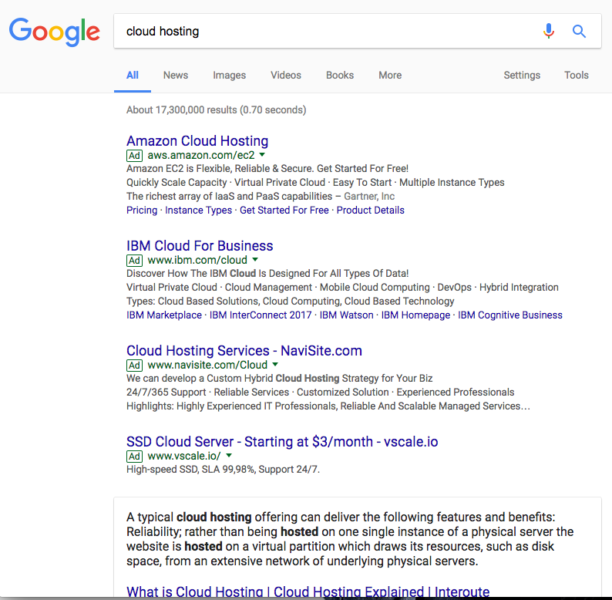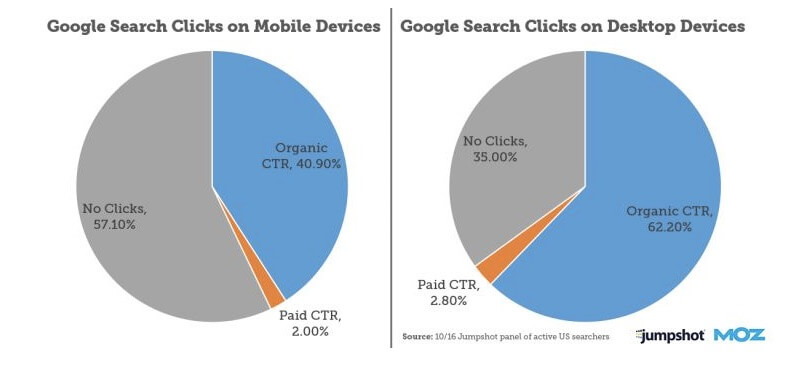
Last month, Google released a video detailing best practices for hiring an SEO company, and it is positioned to become the go-to guide for hiring an SEO. After all, who better to tell companies what they should look for in an SEO than the operators of the world’s most popular search engine?
The advice in the video is useful, but it’s biased and incomplete — like so much of the information the company distributes. For example, Ohye states that valid recommendations from an SEO must be corroborated by official Google statements, but the search giant frequently declines to comment on algorithm updates, and they have also been known to advise what they want SEOs to do — not necessarily what works.
Reputable SEO companies seriously consider all official statements that Google makes about its ranking factors. But if Google is an SEO company’s only source of data and best practice information, the results of the SEO’s work are likely to be suboptimal.
Whether you’re trying to hire an SEO company or improve your own SEO strategy in general, remember a few things about Google: their word is not always their bond, their data is deliberately incomplete, and they are a for-profit company.
1. Google’s word is not gospel
In 2011, Google released an authorship feature in search. By using Schema.org markup, web content could be attributed to a specific author. Authors with multiple high-quality, published pieces would become their own positive ranking factor for content attributed to them. It was an exciting change for both SEOs and writers, and Google expressed a long-term commitment to the feature on multiple occasions.

But in mid-2014, authorship was discontinued. Google cited low adoption rates and low value to searchers as its reasons for discontinuing the feature. It is a notable example of the problem with following Google’s advice to the letter, and it is only one of dozens of discontinued Google services.
Is it wrong for Google to discontinue a feature that offers low value? Absolutely not. But it does demonstrate that just because Google recommends something, it doesn’t mean it’s a valuable task to invest time and money into.
Another example is Google’s assertion late last year that a penalty was coming for sites with intrusive interstitials. They announced the change and forewarned SEOs and webmasters so that they’d have time to remove offending interstitials from their sites. In January, the change was rolled out, but sites who had ignored the warnings don’t seem to have been penalized.
Google’s inconsistencies mean two things:
- The recommendations in Google’s latest video aren’t set in stone either. When user behavior and/or their business priorities change, so will Google’s advice.
- If you actually are trying to hire an SEO company, don’t hire someone who is afraid to throw stones at Goliath. The most effective SEO companies consider a variety of data sources when prioritizing SEO work.
2. Google’s data is incomplete
Google is also known for distilling limited information when it comes to the data provided in its tools. Google Analytics and Search Console are valuable sources of data for engagement SEO tasks and keyword and user intent research, but the data provided by these tools is incomplete.
For example, in 2013, Google moved to SSL encrypted search for all users. This removed keyword data that was formerly accessible through Google Analytics, replacing it with instances of “not provided” data. SEOs were forced to turn to the only other viable source of discovering keywords a site is currently ranking for: Google Search Console.
But in a study published by Moz early this year, researchers found that the numbers in Search Console do not match tests performed in search or Google Analytics data. The researchers ultimately concluded that webmasters should be skeptical of the data in Google Search Console and must validate the data retrieved to avoid reaching unreliable conclusions.
Data provided by Google is rounded, estimated, sampled and incomplete. If you’re hiring an SEO company, be sure to ask what tools they use. Analytics and Search Console should be on the list, but they should be paired with third-party tools as well.
And it’s not just numerical or keyword data. Google has a long history of getting SEOs to work for them by only distributing information that promotes its own agenda. Remember to take Google’s official advice — whether it’s about hiring an SEO or specific SEO strategies — with a grain of salt.
3. Google is a for-profit company, not a public service
When an algorithm update is released or a change is made, the reasoning Google provides almost always points back to providing an excellent user experience. This makes it easy to imagine that their decisions are grounded in public service: provide excellent search results so people can find what they need quickly and easily.
But Google is not a public service, it’s a for-profit company. A 2015 report, “Beyond the FTC Memorandum: Comparing Google’s Internal Discussions with Its Public Claims,” compared Google’s internal policies and practices to their public statements about those policies and practices and found several inconsistencies. The FTC found evidence to question whether Google’s search results:
- are designed to benefit users or Google.
- de-prioritize bad sites or Google competitors.
- use unbiased algorithms or human decisions.
Because Google’s empire is built on paid ads.
In the first quarter of 2015 Google took in $17.3 billion in revenue, up 12% year over year. Nearly all of it — $15.5 billion — came from advertising sales. About $12 million of that came on the company’s own sites with the rest being derived from its network.
The value of that digital real estate depends on users preferring their service and spending time on their SERPs, which is why paid ad space is growing. In 2016, Google added a fourth ad slot above organic search results and expanded the amount of text that can appear in ads. While these changes have driven increased ad growth, they’ve harmed organic search growth, which is arguably not in the user’s best interest. Further:
- “Ad” labels continue to slowly disappear on SERPs, making paid ads look more like earned, organically ranked results.
- Description text may be set to expand again, making the paid ads larger and more enticing than content ranking well because of quality, user preference and so on.
Between additional top-of-page and bottom-of-page ads, featured snippets, carousels, Google tools and “people also ask” boxes, organic search results on page one have been reduced from 10 links to an average of 8.5. For many queries, organic results do not appear until well below the fold.

Four ads at the top of Google’s SERP for “cloud hosting” push even a piece of the featured snippet below the fold.
In some cases — particularly for content in featured snippets — these changes have helped sites grow incoming organic traffic. In other cases, these changes have served Google in overtaking its competitors:
- Organic travel and shopping site results both appear below tools like Google Flights and Google Shopping.
- Newly implemented carousels feature Google Analytics in the first spot for queries like “best marketing software.” When clicking on a carousel result, Google doesn’t take you to the home page of the company listed; it performs a secondary search.
These changes to SERPs result in users spending more time on Google and seeing more ads. A recent study by Moz and Jumpshot proved that on mobile search, which Google is favoring moving forward, more than half of all searches result in zero clicks.

For an advertising-funded search engine, these changes are unsurprising, though seemingly counterproductive to the searcher-first policies the company enforces on other sites.
Thus, when Google releases new information, it’s important to consider it in a larger context. For example, if you removed all of the newsletter signup interstitials from your site at Google’s command, you likely experienced a reduction in incoming leads and new subscribers.
There’s also no reason to believe that Google’s recent advice about hiring an SEO agency is any more altruistic. If you’re going to start working with an SEO professional, be sure to ask how they approach challenges like shrinking organic results and the rise of mobile search.
SEO is more complex — and competitive — than ever before
Some have pointed to these changes as proof that SEO is dead, but that’s an over-dramatization of the facts. SEO is not dead, but it is more competitive than ever before. Google is a serious competitor to contend with in search results, but it’s not the only one:
The amount of content online is massive, and there are a lot of companies vying for users’ attention. The growth in competition for search results isn’t surprising given than Google reports handling more than 2 trillion searches per year. Search represents a significant market for inbound traffic, and the bottom line is that Google is still the most popular search engine. It’s an extremely powerful, viable and required channel for marketers.
The best thing to look for when hiring an SEO is someone who understands modern SEO strategies, and who teaches you how to utilize the power of search engines to grow your own audience. This is advice Google will never provide, but it is nonetheless crucial to successful digital marketing in a fiercely competitive field.
It definitely won’t do digital publishers any good to try to fight the search giant, but — whether you’re hiring an SEO or improving your strategy in general — remember to keep Google’s advice in context.
Some opinions expressed in this article may be those of a guest author and not necessarily Search Engine Land. Staff authors are listed here.
Source: Search Engine Land